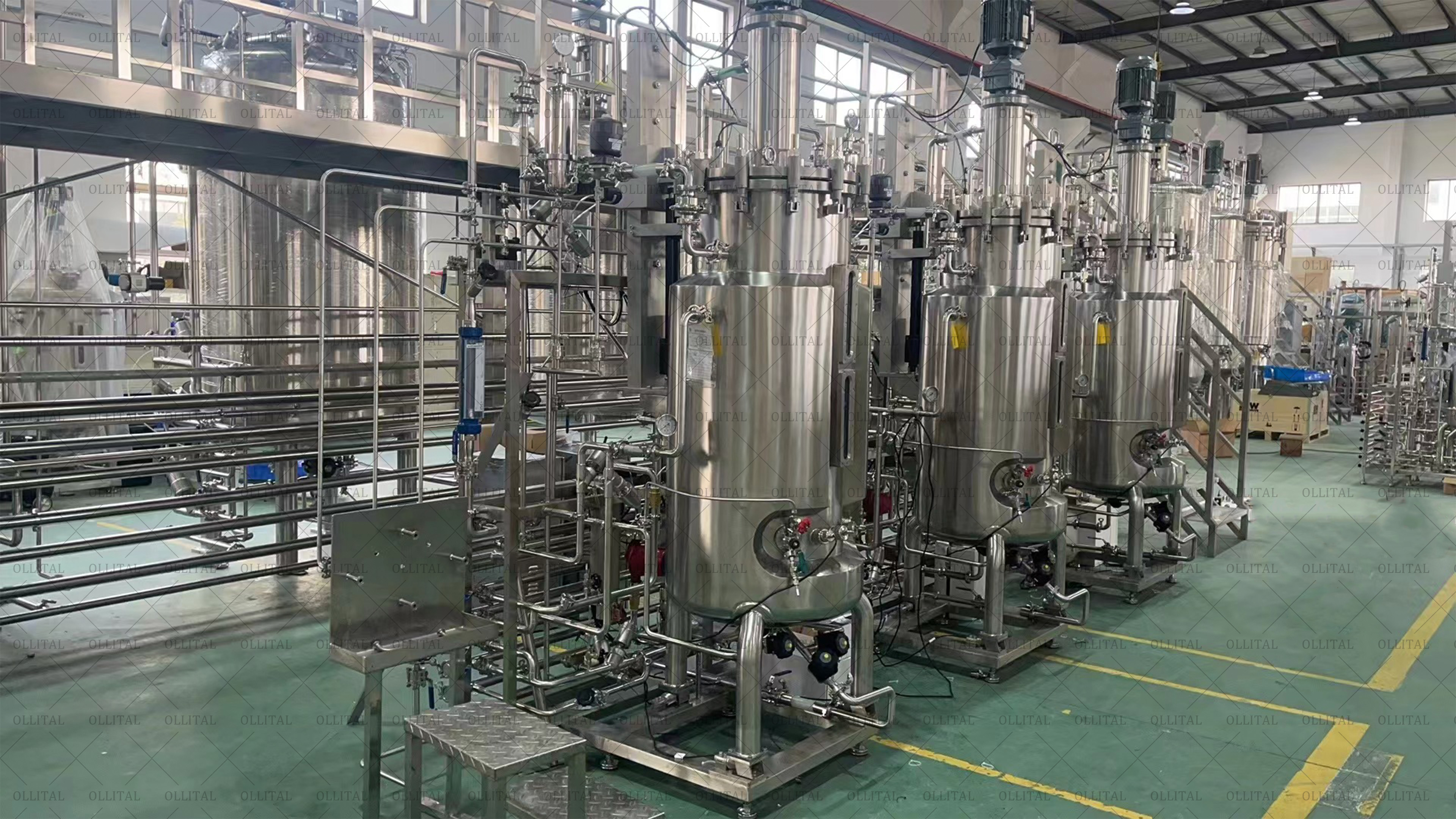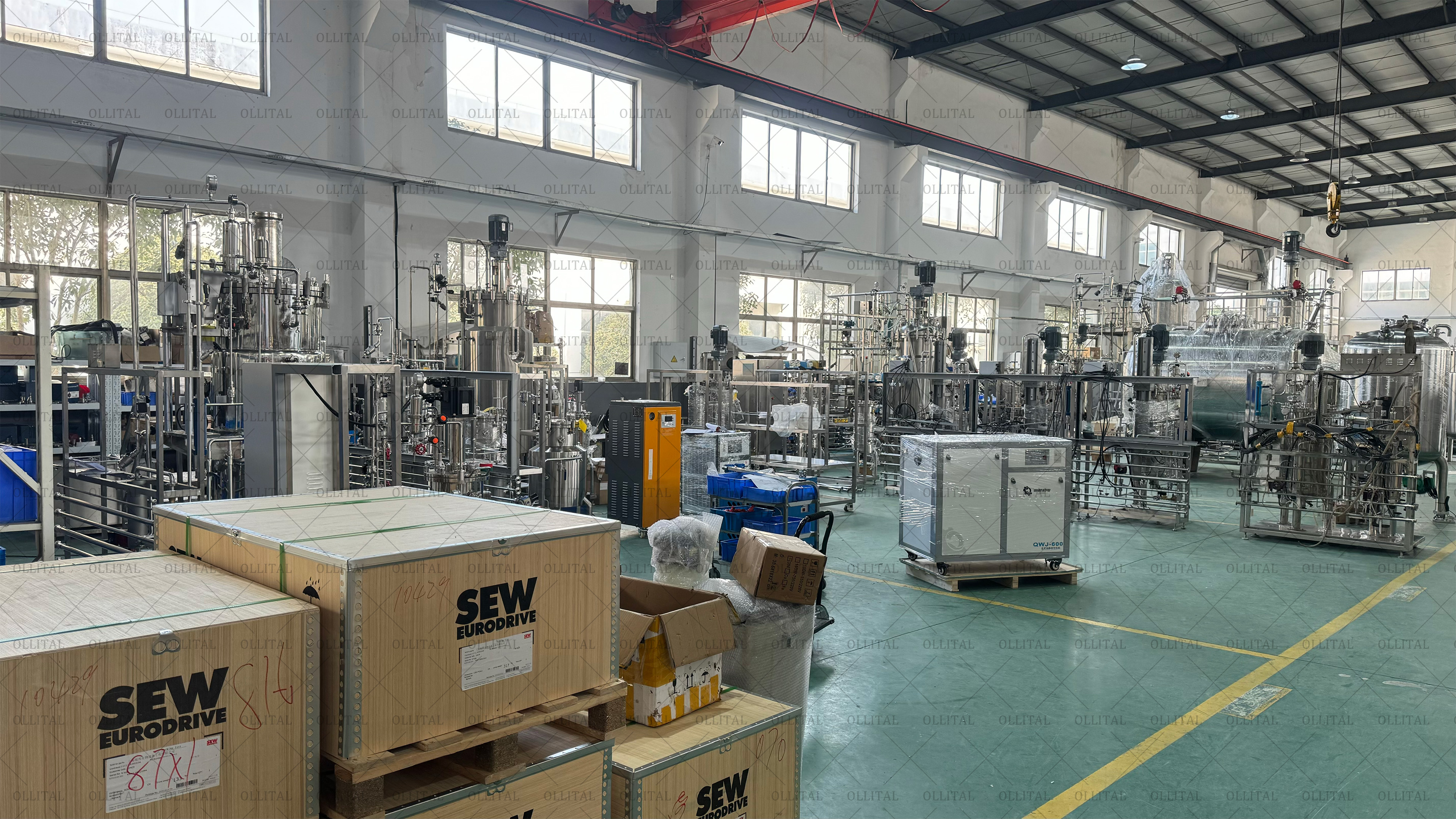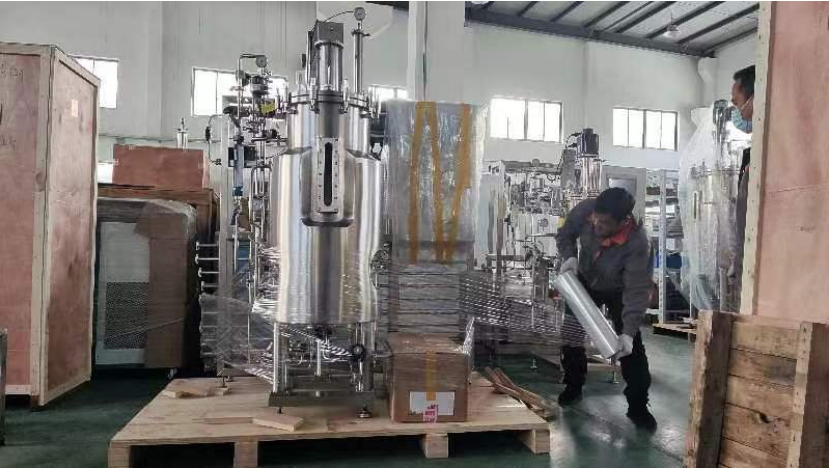Plant cell culture has the characteristics of long cycle, weak cell shear resistance, and easy aggregation. At the same time, the purpose of plant cell scale culture is to produce natural products, which are all metabolites of the cell. Therefore, the design of plant cell culture reactors should not only consider factors that are conducive to cell growth, but also to the accumulation and separation of products. Overall, a reactor suitable for plant cells should have suitable oxygen transfer, good fluidity, and low shear force. Based on the characteristics of different plant cell growth and accumulation of metabolites, various types of reactors have been studied and designed for plant cell culture.The choice of reactor depends on the concentration of production cells, ventilation rate, and the degree of dispersion of the provided nutrients. According to the type of ventilation and stirring system, bioreactors can be divided into the following categories:
01 Mechanical Stirring Bioreactor
Mechanical stirred bioreactors have a wide operating range, high mixing degree, wide adaptability, and are widely used in large-scale production. The shear force generated in the mixing tank is high, which can easily damage cells and directly affect cell growth and metabolism, especially for the generation of secondary products. The higher the stirring speed, the greater the shear force generated and the greater the damage to plant cells. For some shear sensitive cells, traditional mechanical stirring tanks are not suitable. To this end, improvements have been made to the mixing tank, including changing the mixing form, impeller structure and type, air distributor, etc., aiming to reduce the generated shear force while meeting the requirements of oxygen supply and mixing.

02 Non stirred bioreactor
Compared to traditional stirred reactors, non stirred reactors generate less shear force and have a simple structure, making them suitable for plant cell culture. The main types of non stirred reactors include bubble reactors, airlift reactors, and drum reactors.
By comparing the bioreactors used to cultivate perilla cells, it was found that the bubbling reactor was superior to the mechanical stirring reactor. However, due to the low utilization rate of oxygen in bubble reactors, if a large ventilation volume is used, the shear force generated will damage the cells. Research has shown that turbulent shear force is an important factor in inhibiting cell growth and damaging cells when spraying large bubbles. Larger bubbles or higher gas velocities result in higher shear forces, which are harmful to plant cells.
Airlift reactors are widely used in the research and production of plant cell culture. Through carrot cell culture research, it was found that the highest cell concentration and shortest doubling time can be obtained from the gas lift reactor by comparing the stirred tank, gas jet tank, and gas lift reactor with a ventilation tube. Airlift reactors are used for various plant cell suspension or immobilized cell cultures, but their operating flexibility is small. When the gas speed is low, especially when the H/D is large, and when the density is high, the mixing performance is poor. Excessive gas supply and high oxygen concentration can actually affect cell growth and the synthesis of secondary metabolites. The combination of airlift fermentation tanks and slow stirring can compensate for the weakness of poor mixing at low gas speeds. The use of segmented airlift tubes is also beneficial for the utilization and mixing of oxygen.
A study on the use of rotary drum reactors for tobacco cell suspension culture found that under the same conditions, the growth rate in rotary drum reactors was higher than that in airlift reactors with a ventilation tube. The oxygen transfer and shear force damage to cells in rotary drum reactors were better than those in airlift reactors.

Many plant cell culture processes require light, and it is often considered to add a lighting system on top of a regular reactor. However, in practice, there are many problems, such as the installation and protection of light sources, light transmission, and the impact of lighting systems on reactor gas supply and mixing. Small scale experiments often use external light to illuminate the reactor surface with a transparent illumination area, and the light source is fixed around the outside of the reactor. However, the setting of transparent windows and the uniform acceptance of light by internal cultures during large-scale production are difficult to solve, so many people have studied reactors using internal light sources.
Xiamen Ollital Technology Co., Ltd. is a professional manufacturer that develops and produces bioreactors (fermentation tanks), biological process controllers, and contracts biological fermentation projects. The company has strong technical strength and a group of professional personnel with years of experience in designing and manufacturing fermentation equipment. The BIOTECH series fermentation tanks and various powerful biological process controllers produced by the company have received widespread praise in the biological fermentation industry due to their excellent quality, advanced control technology, and timely after-sales service. Our company's products are widely used in various fields of the biotechnology industry, including education, scientific research, and production. Over the years, over a thousand sets of various fermentation tanks have been operating normally throughout the country.
